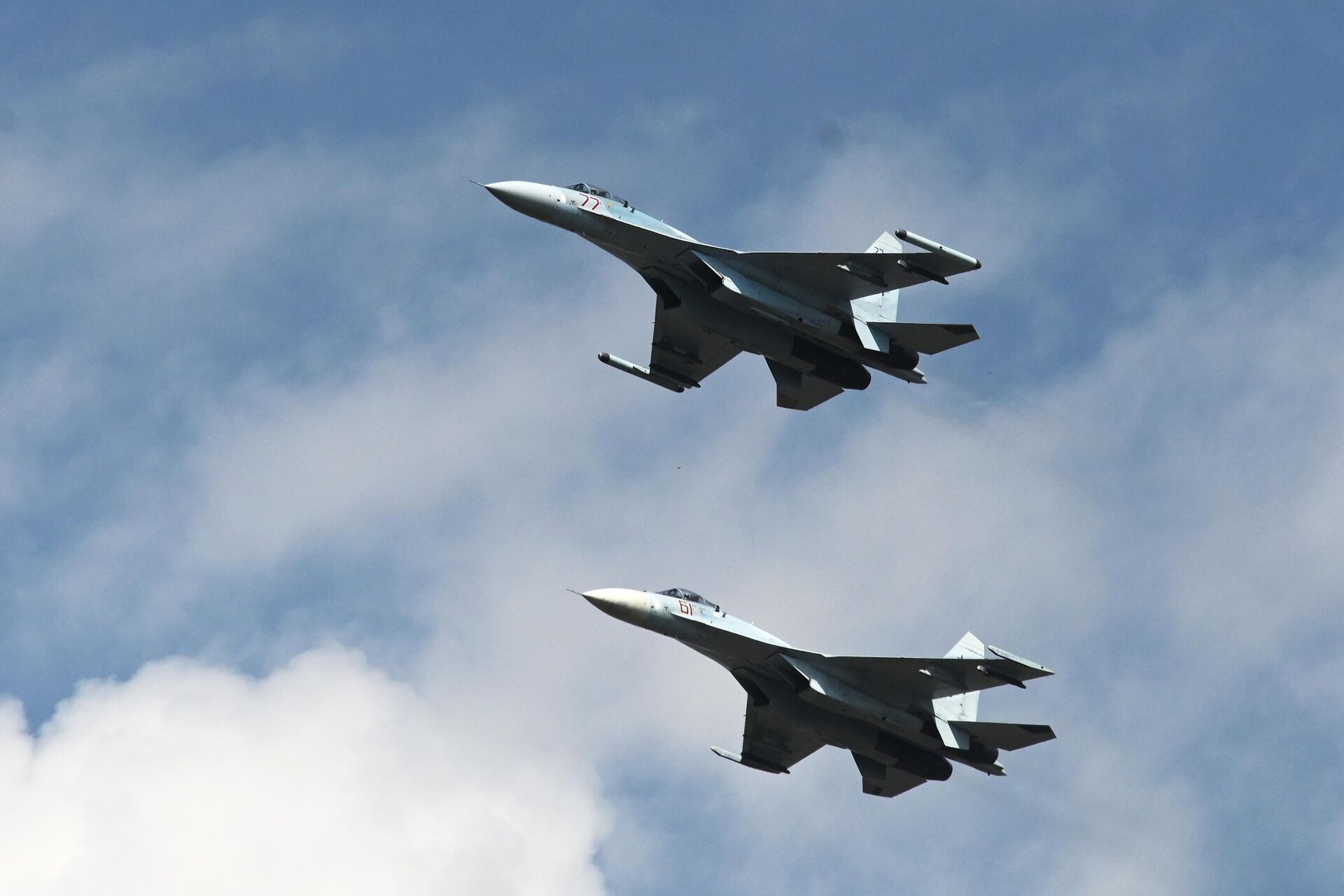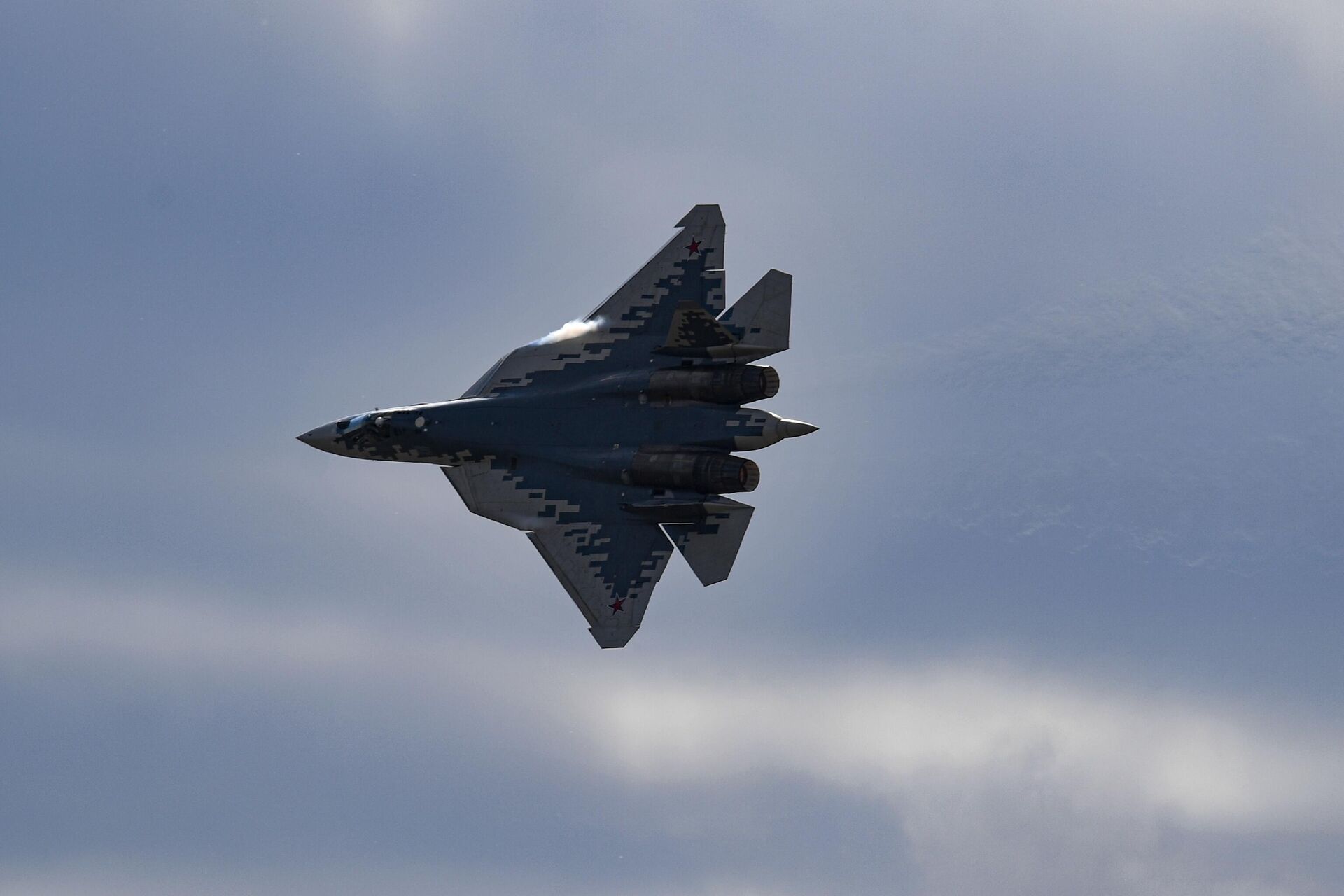https://sputnikglobe.com/20240729/sukhoi-aircraft-keeping-russias-skies-safe-for-85-years-and-counting-1119541660.html
Sukhoi Aircraft: Keeping Russia’s Skies Safe For 85 Years and Counting
Sukhoi Aircraft: Keeping Russia’s Skies Safe For 85 Years and Counting
Sputnik International
Monday marks the 85th anniversary of the creation of the Sukhoi Design Bureau. In honor of the occasion, check out some of the most noteworthy examples of the legendary aircraft maker's planes.
2024-07-29T12:15+0000
2024-07-29T12:15+0000
2024-07-29T12:15+0000
military
military & intelligence
karen kwiatkowski
russia
ussr
sukhoi
sukhoi design bureau
su-17
su-35
su-57
https://cdn1.img.sputnikglobe.com/img/19193/89/191938945_0:113:3241:1936_1920x0_80_0_0_b299d4d3ef4a4b9dd4b610347af066c1.jpg
On July 29, 1939, on the eve of the Second World War, aircraft designer Pavel Sukhoi was appointed chief designer of his own independent design bureau.Born in 1895 in the village of Glubokoye in what is now Vitebsk region in modern-day Belarus, Sukhoi rapidly made a name for himself as one of the brightest up-and-coming aircraft designers in the USSR in the 1920s and 1930s, participating in the creation of over half-a-dozen fighters, bombers, and experimental aircraft alongside other giants of Soviet aircraft design, including Andrei Tupolev and Nikolai Polikarpov.In the 85 years since its formation, the Sukhoi Design Bureau has created nearly two dozen of the USSR and Russia’s best-known reconnaissance, ground attack, interceptor, air superiority and multirole fighter aircraft. Sputnik has picked seven notable examples.Su-2: Co-designed by Pavel Sukhoi and Andrei Tupolev, this training, reconnaissance and light bomber was the first Sukhoi aircraft ever produced. Over 900 Su-2s were delivered to the military between 1939 and 1942. Along with six ShKAS machine guns and RS-82 series unguided rockets, these aircraft could carry up to 600 kg worth of bombs.Su-17: Sukhoi entered the supersonic age with the Su-7 and Su-9 series of ground attack and interceptor fighter aircraft in the late 1950s, but truly perfected the technology in 1970 with its Su-17 variable-sweep-wing fighter-bomber. With over 2,860 Su-17 variants built, the aircraft became the most-mass produced jet in the design bureau’s history.Featuring a top speed up to 1,400 km/h, a 1,150 km combat range, and 12 hard points for up to 4 tons of munitions, Su-17s were exported to over a dozen countries around the world during the Cold War, from Syria, Libya and the Yemens to Vietnam, Angola, Poland and Peru.Su-25: Developed by Sukhoi in the 1970s as a rugged, maneuverable subsonic ground attack aircraft for close air support missions, the Su-25 turned out to be one of the most versatile and enduring aircraft in Sukhoi's lineup (as evidenced by an extremely low retirement rate). The one seater jet has a 975 km per hour top speed, a 750 km combat range, and 11 hard points for up to 4.4 tons of munitions, from rockets and air-to-air and air-to-surface missiles to FAB (high explosive), KAB (guided), BetAB (concrete-breaking) and ZAB (incendiary) series bombs. The aircraft has seen widespread combat use, and has been exported to a multitude of countries around the world.Iran found itself the surprise owner of seven Su-25s in January 1991, when Iraqi Air Force pilots pilots flew their aircraft to the Islamic Republic to escape the US-led coalition during Operation Desert Storm. Iran purchased an additional six Su-25s from Russia in the mid-2000s, using a pair of them to ward off a US MQ-1 Predator drone that flew into Iranian airspace in 2012. Iran transferred its Su-25s to Iraq in 2014 to assist Baghdad in its fight against ISIS.*Su-27: Introduced in 1985, the Su-27 was created as a response to what was then the latest in US fourth generation jet fighter technology, but wound up becoming the father of some of the most modern Russian, Indian and Chinese warplanes in service today, including the Su-30MKI, the Su-35 and Shenyang J-11. From air superiority to escorts to bombing, these twin-engine supermaneuverable jets have proven capable of any mission Russia's Aerospace Forces have thrown at them.Su-34: This all-weather fighter-bomber was the result of the Soviet (and later Russian) military's need for a new generation of frontline supersonic strike aircraft capable of missions in operational and tactical depth at standoff ranges. Conceived in the mid-1980s and flown for the first time in April 1990, the Su-34 suffered a difficult development history which nearly ended in catastrophe due to the economic and political crisis of the 1990s. Development slowed to a crawl, but the aircraft survived, with limited series production beginning in 2006, and the unique, duck-nose fighter-bomber formally adopted into service in 2014.It wouldn't take long for the aircraft to be tasked with combat operations, with six Su-34 deployed on rotation to Syria starting in 2015 to assist in Damascus's war against a collection of foreign-sponsored jihadists and so-called 'moderate' rebels. The jets have also been used extensively in the ongoing Russia-NATO proxy war in Ukraine, flying tens of thousands of sorties with their complements of Kh-36 and Kh-65 cruise missiles, and the super-heavy KAB and upgraded FAB guided and glide bombs which have proven instrumental in smashing through Ukraine's heavily fortified defenses in the Donbass this past spring.Su-47: Definitely the most unique aircraft in this list is the Su-47 - an experimental forward-swept wing jet design developed by Sukhoi after being tasked with the creation of a new carrier-based fighter with radical super-maneuverability characteristics, the ability to maintain supersonic speed in cruising mode, be capable of engaging in all-angle fire on enemy air targets, and be invisible to radar. Design was carried out in close coordination with Moscow's Central Aerohydrodynamic Institute beginning, and by 1988 the production of a full-scale technology demonstrator was authorized by the military.The aircraft achieved incredible maneuverability characteristics at subsonic speeds, perfect for dogfights and evading enemy missiles. The projected g-force acting on the plane's pilots were calculated to be so high that the cockpit was installed with a 30 degree backrest angle (instead of the usual 13-15 degrees) to reduce the strain.To give an idea of the jet's power, it's worth mentioning that it was fitted with a variant of the tried and tested DF-30 engine, the same one used in the Mikoyan MiG-31 interceptor/strike aircraft, the Ilyushin Il-76 strategic airlifter and Tupolev's Tu-134 and Tu-154 series passenger liners. The jet could accelerate to speeds up to 2,500 km per hour, and had a subsonic combat radius of 2,000 km (800 km in supersonic mode).The Su-47 made its first flight in September 1997. Incredible footage is available online showing the aircraft in flight at airshows in 1999 and 2001.The Su-47 project was closed in the 2000s, but its development by lead designer Mikhail Pogosyan and his team was not in vain, as a number of technologies and engineering decisions that would end up being used in the Su-57 were first developed for and tested by the Su-47.Su-57: Created in the 2000s and 2010s and first introduced into service in small numbers in 2020, the Su-57 became Russia’s first multi-role fifth-generation stealth jet fighter. Capable of accelerating to speeds up to nearly 2500 km\h and featuring a range up to 4,500 km with 2 outboard fuel tanks (or 3,500 km without), these heavy jets are fitted with Russia’s latest avionics, radar, targeting and electronic countermeasures systems.Su-57s have 12 hard points (6 internal, 6 external) and can carry all of Russia’s new air-to-air, air-to-surface, anti-ship, and anti-radiation missiles, and heavy guided glide bombs. About two dozen series Su-57s have been produced to date, with 76 ordered.Judging by Sukhoi’s latest work, Kwiatkowski says that “it looks like engineering and science still drive” the company’s efforts, which is crucial in a highly competitive world, where “the organizations that can respond most rapidly and most wisely will prevail, and this includes cost effectiveness.” The latter is something US aircraft makers in particular should take heed of, she stressed.*A terrorist group outlawed in Russia and many other countries.
russia
ussr
Sputnik International
feedback@sputniknews.com
+74956456601
MIA „Rossiya Segodnya“
2024
News
en_EN
Sputnik International
feedback@sputniknews.com
+74956456601
MIA „Rossiya Segodnya“
Sputnik International
feedback@sputniknews.com
+74956456601
MIA „Rossiya Segodnya“
what are the most popular sukhoi planes, what are the top sukhoi fighters, what sukhoi fighters and bombers does russia operate
what are the most popular sukhoi planes, what are the top sukhoi fighters, what sukhoi fighters and bombers does russia operate
Sukhoi Aircraft: Keeping Russia’s Skies Safe For 85 Years and Counting
Monday marks the 85th anniversary of the formation of the Sukhoi Design Bureau. In honor of the occasion, check out some of the most noteworthy examples of the legendary aircraft designer's planes.
On July 29, 1939, on the eve of the Second World War, aircraft designer Pavel Sukhoi was appointed chief designer of his own independent design bureau.
Born in 1895 in the village of Glubokoye in what is now Vitebsk region in modern-day Belarus, Sukhoi rapidly made a name for himself as one of the brightest up-and-coming aircraft designers in the USSR in the 1920s and 1930s, participating in the creation of over half-a-dozen fighters, bombers, and experimental aircraft alongside other giants of Soviet aircraft design, including Andrei Tupolev and Nikolai Polikarpov.
In the 85 years since its formation, the Sukhoi Design Bureau has created nearly two dozen of the USSR and Russia’s best-known reconnaissance, ground attack, interceptor, air superiority and multirole fighter aircraft. Sputnik has picked seven notable examples.
Su-2: Co-designed by Pavel Sukhoi and Andrei Tupolev, this training, reconnaissance and light bomber was the first Sukhoi aircraft ever produced. Over 900 Su-2s were delivered to the military between 1939 and 1942. Along with six ShKAS machine guns and RS-82 series unguided rockets, these aircraft could carry up to 600 kg worth of bombs.
In September 1941, Hero of the Soviet Union Ekaterina Zelenko rammed her Su-2 into a Messerschmitt Bf 109 fighter, cutting off the enemy plane’s wing with her plane’s propeller and causing it to crash. She remains the first and only female pilot to ever conduct a successful air ramming.
Su-17: Sukhoi entered the supersonic age with the
Su-7 and Su-9 series of ground attack and interceptor fighter aircraft in the late 1950s, but truly perfected the technology in 1970 with its Su-17 variable-sweep-wing fighter-bomber. With over 2,860 Su-17 variants built, the aircraft became the most-mass produced jet in the design bureau’s history.
Featuring a top speed up to 1,400 km/h, a 1,150 km combat range, and 12 hard points for up to 4 tons of munitions, Su-17s were exported to over a dozen countries around the world during the Cold War, from Syria, Libya and the Yemens to Vietnam, Angola, Poland and Peru.
Su-25: Developed by Sukhoi in the 1970s as a rugged, maneuverable subsonic ground attack aircraft for close air support missions, the Su-25 turned out to be one of the most versatile and enduring aircraft in Sukhoi's lineup (as evidenced by an extremely low retirement rate). The one seater jet has a 975 km per hour top speed, a 750 km combat range, and 11 hard points for up to 4.4 tons of munitions, from rockets and air-to-air and air-to-surface missiles to FAB (high explosive), KAB (guided), BetAB (concrete-breaking) and ZAB (incendiary) series bombs. The aircraft has seen widespread combat use, and has been exported to a multitude of countries around the world.
Iran found itself the surprise owner of seven Su-25s in January 1991, when Iraqi Air Force pilots pilots flew their aircraft to the Islamic Republic to escape the US-led coalition during Operation Desert Storm. Iran purchased an additional six Su-25s from Russia in the mid-2000s, using a pair of them to ward off a US MQ-1 Predator drone that flew into Iranian airspace in 2012. Iran transferred its Su-25s to Iraq in 2014 to assist Baghdad in its fight against ISIS.*
Su-27: Introduced in 1985, the Su-27 was created as a response to what was then the latest in US fourth generation jet fighter technology, but wound up becoming the father of some of the most modern Russian, Indian and Chinese warplanes in service today, including the Su-30MKI, the Su-35 and Shenyang J-11. From air superiority to escorts to bombing, these twin-engine supermaneuverable jets have proven capable of any mission Russia's Aerospace Forces have thrown at them.
“For me, [the Su-27] origin story and the subsequent leadership of the Bureau demonstrates a unique ability to radically innovate under pressure, and to put engineering and science before politics and profiteering,” retired US Air Force Lt. Col. Karen Kwiatkowski told Sputnik, recalling how the Su-27’s chief designer Mikhail Simonov took the radical step of halting the plane’s development mid-flow in 1977 and starting from scratch to create a fundamentally new type of plane.
Su-34: This all-weather fighter-bomber was the result of the Soviet (and later Russian) military's need for a new generation of frontline supersonic strike aircraft capable of missions in operational and tactical depth at standoff ranges. Conceived in the mid-1980s and flown for the first time in April 1990, the Su-34 suffered a difficult development history which nearly ended in catastrophe due to the economic and political crisis of the 1990s. Development slowed to a crawl, but the aircraft survived, with limited series production beginning in 2006, and the unique, duck-nose fighter-bomber formally adopted into service in 2014.
It wouldn't take long for the aircraft to be tasked with combat operations, with six Su-34 deployed on rotation to Syria starting in 2015 to assist in Damascus's war against a collection of foreign-sponsored jihadists and so-called 'moderate' rebels. The jets have also been used extensively in the ongoing Russia-NATO proxy war in Ukraine, flying tens of thousands of sorties with their complements of Kh-36 and Kh-65 cruise missiles, and the super-heavy KAB and upgraded FAB guided and glide bombs which have proven instrumental in smashing through Ukraine's heavily fortified defenses in the Donbass this past spring.
Su-47: Definitely the most unique aircraft in this list is the Su-47 - an experimental forward-swept wing jet design developed by Sukhoi after being tasked with the creation of a new carrier-based fighter with radical super-maneuverability characteristics, the ability to maintain supersonic speed in cruising mode, be capable of engaging in all-angle fire on enemy air targets, and be invisible to radar. Design was carried out in close coordination with Moscow's Central Aerohydrodynamic Institute beginning, and by 1988 the production of a full-scale technology demonstrator was authorized by the military.
The aircraft achieved incredible maneuverability characteristics at subsonic speeds, perfect for dogfights and evading enemy missiles. The projected g-force acting on the plane's pilots were calculated to be so high that the cockpit was installed with a 30 degree backrest angle (instead of the usual 13-15 degrees) to reduce the strain.
To give an idea of the jet's power, it's worth mentioning that it was fitted with a variant of the tried and tested DF-30 engine, the same one used in the Mikoyan MiG-31 interceptor/strike aircraft, the Ilyushin Il-76 strategic airlifter and Tupolev's Tu-134 and Tu-154 series passenger liners. The jet could accelerate to speeds up to 2,500 km per hour, and had a subsonic combat radius of 2,000 km (800 km in supersonic mode).
The Su-47 made its first flight in September 1997. Incredible
footage is available online
showing the aircraft in flight at airshows in 1999 and 2001.
The Su-47 project was closed in the 2000s, but its development by lead designer Mikhail Pogosyan and his team was not in vain, as a number of technologies and engineering decisions that would end up being used in the Su-57 were first developed for and tested by the Su-47.
Su-57: Created in the 2000s and 2010s and first introduced into service in small numbers in 2020, the Su-57 became Russia’s first multi-role fifth-generation stealth jet fighter. Capable of accelerating to speeds up to nearly 2500 km\h and featuring a range up to 4,500 km with 2 outboard fuel tanks (or 3,500 km without), these heavy jets are fitted with Russia’s latest avionics, radar, targeting and electronic countermeasures systems.
Su-57s have 12 hard points (6 internal, 6 external) and can carry all of Russia’s new air-to-air, air-to-surface, anti-ship, and anti-radiation missiles, and heavy guided glide bombs. About two dozen series Su-57s have been produced to date, with 76 ordered.
“Clearly, Russia’s fighter and bomber industry is carrying their weight in the special military operation, in a combined arms military operation,” Kwiatkowski said. “In Ukraine specifically, because all of the higher tech Intelligence, Surveillance, Reconnaissance (ISR) is US and NATO, much useful information is being collected and can be assessed for innovation in both offense and defense,” the observer said.
Judging by Sukhoi’s latest work, Kwiatkowski says that “it looks like engineering and science still drive” the company’s efforts,
which is crucial in a highly competitive world, where “the organizations that can respond most rapidly and most wisely will prevail, and this includes cost effectiveness.” The latter is something US aircraft makers in particular
should take heed of, she stressed.
*A terrorist group outlawed in Russia and many other countries.
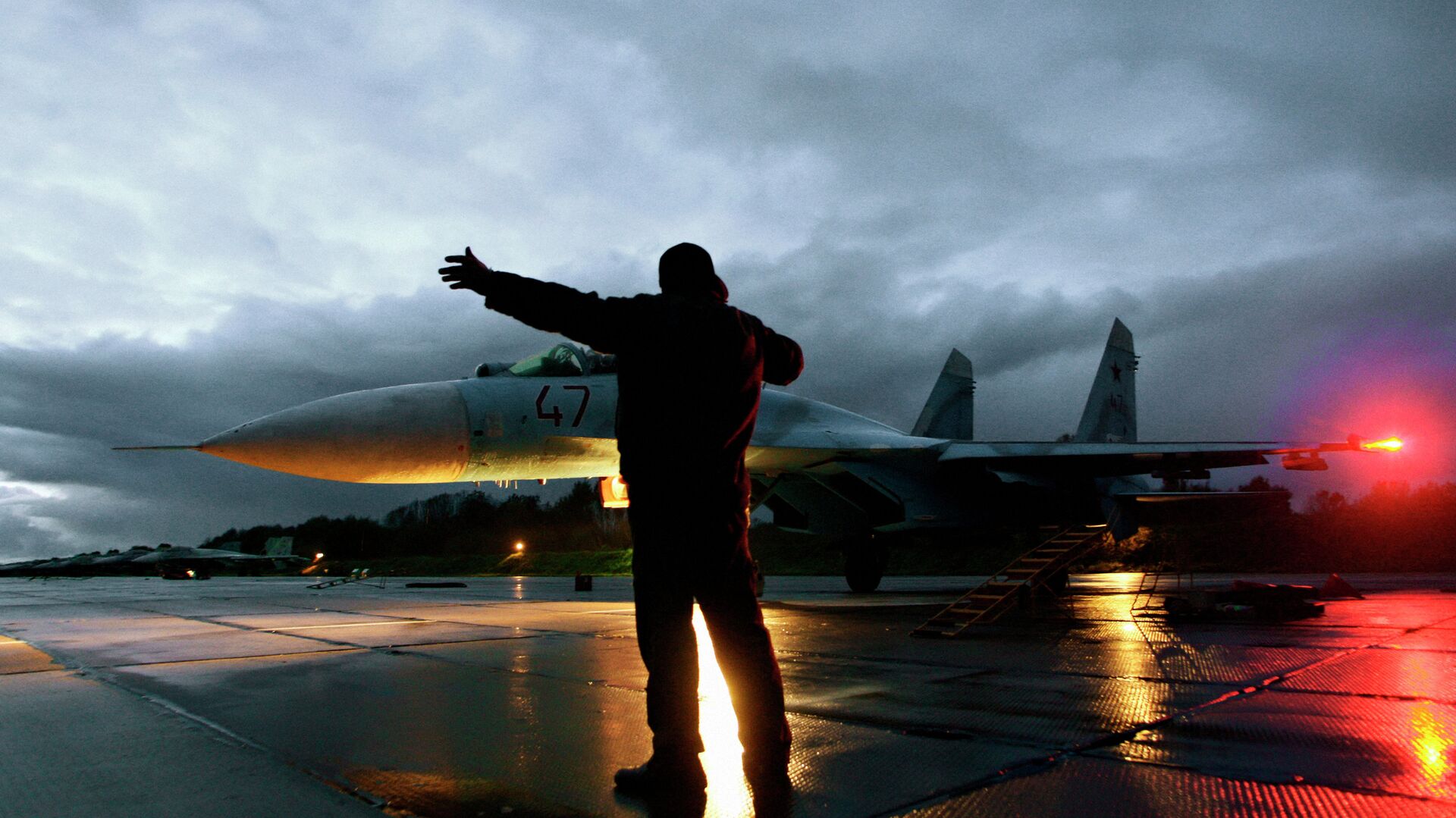
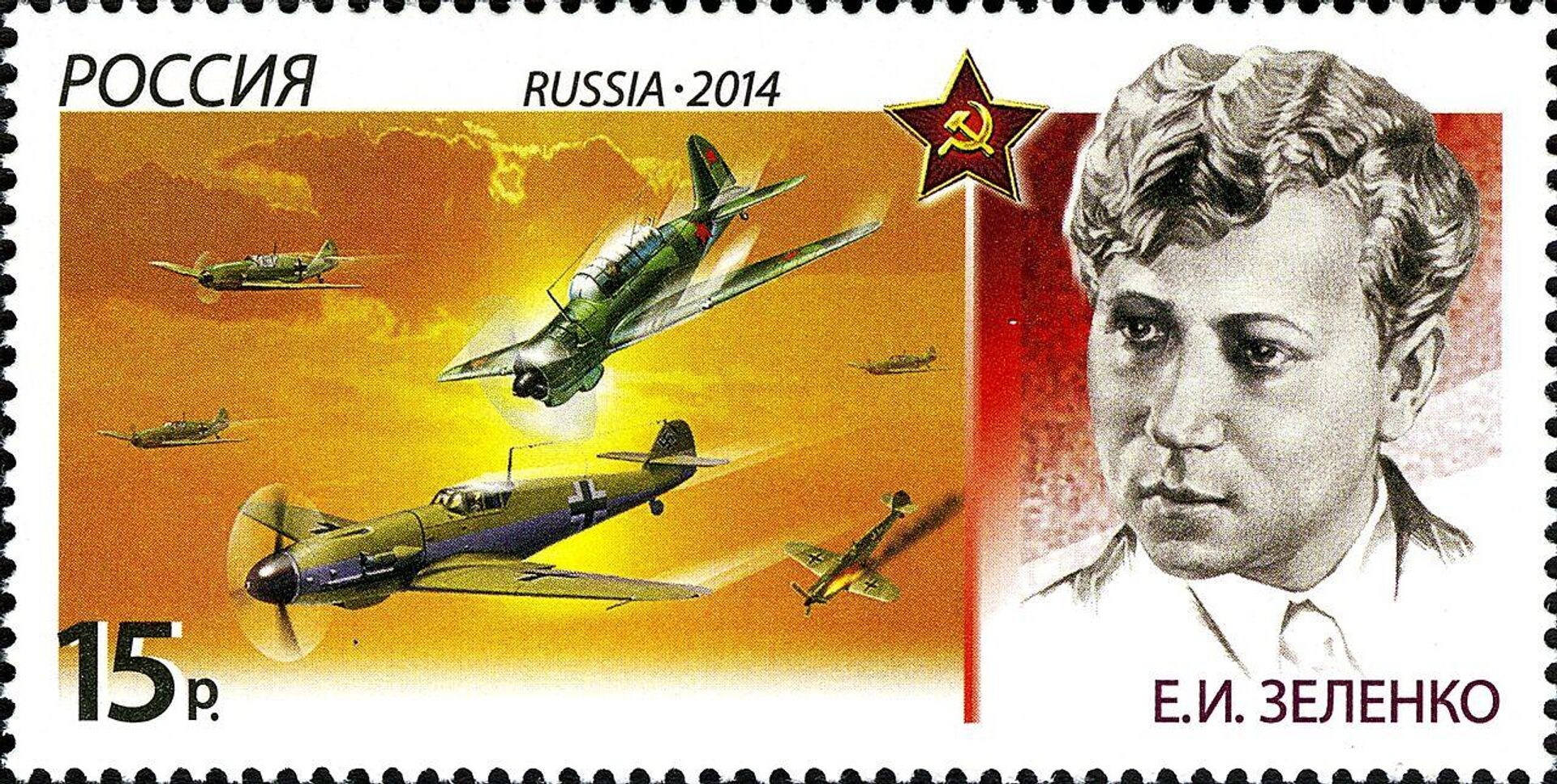
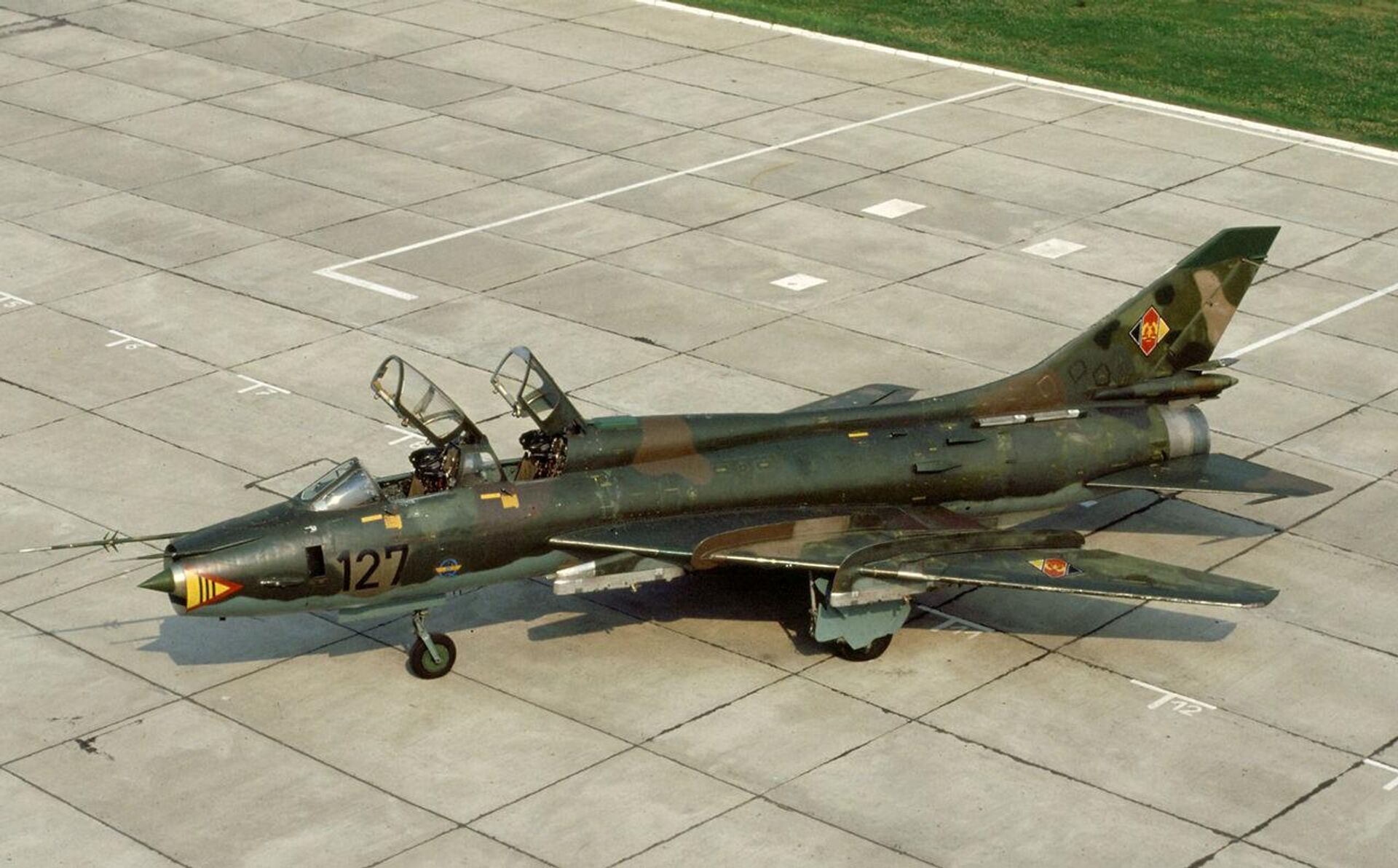
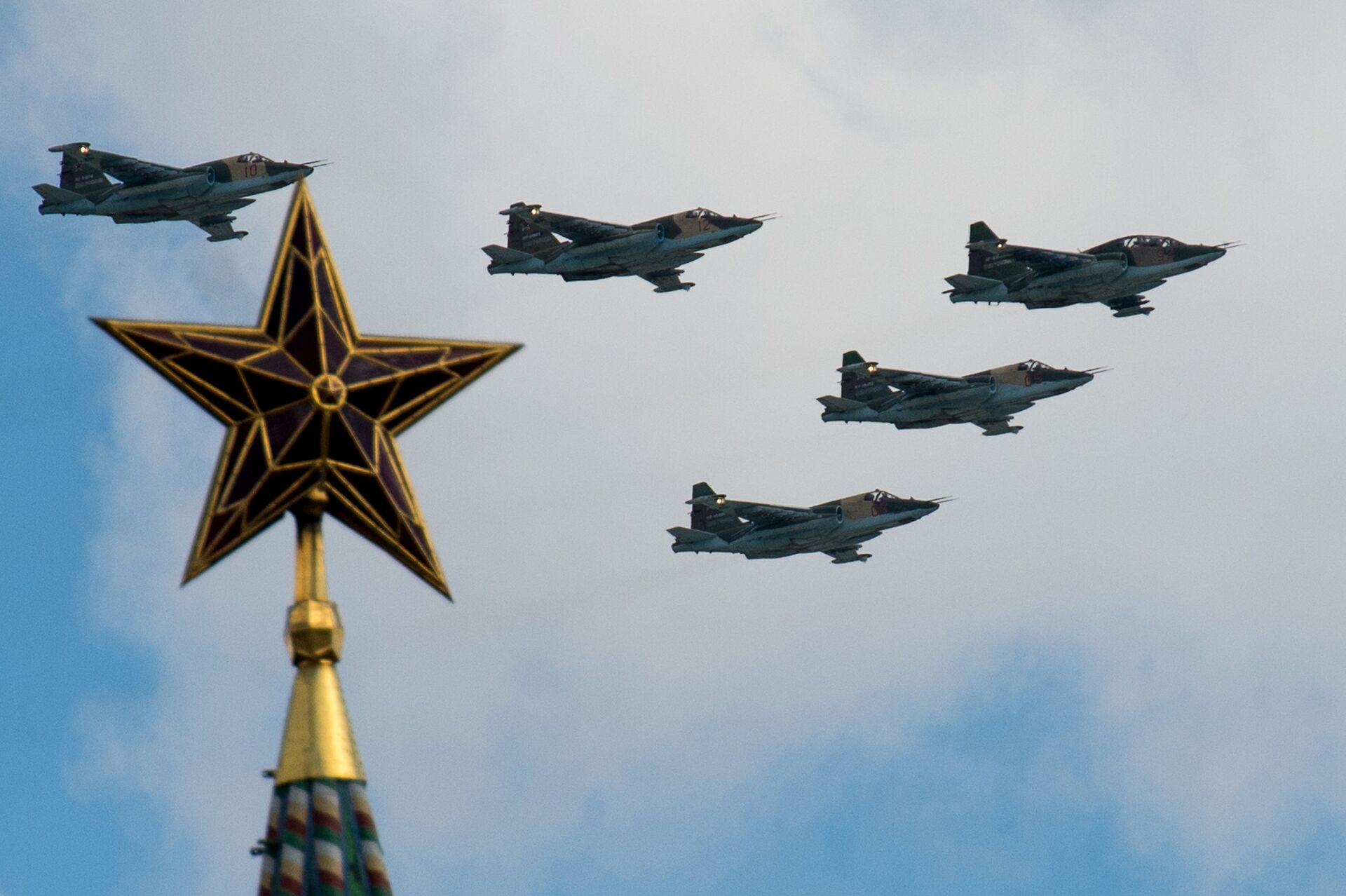
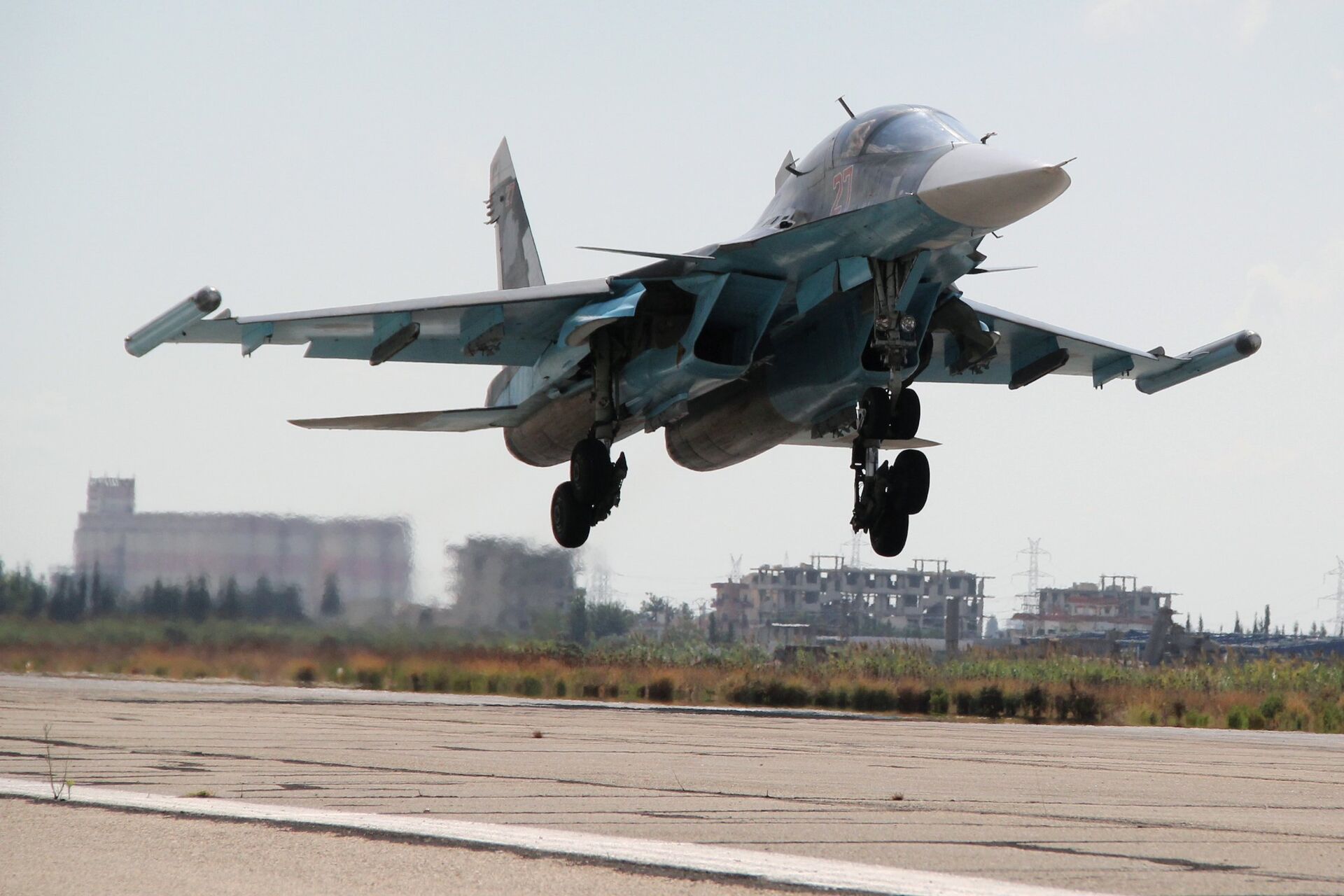
![Sukhoi Su-47 Berkut [Golden Eagle] fighter and experimental flying laboratory Sukhoi Su-47 Berkut [Golden Eagle] fighter and experimental flying laboratory - Sputnik International, 1920, 28.07.2024](https://cdn1.img.sputnikglobe.com/img/106486/05/1064860543_0:0:2836:2048_1920x0_80_0_0_da3f885b0c2eba2d6481a7e0db08a060.jpg)

